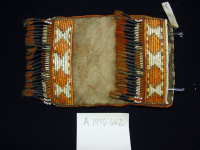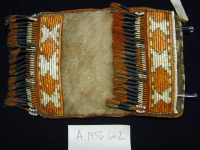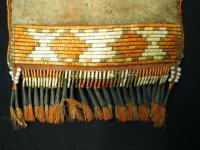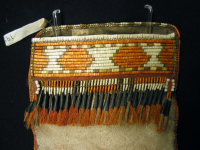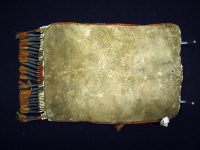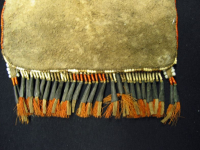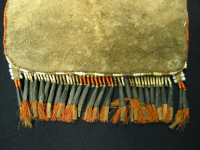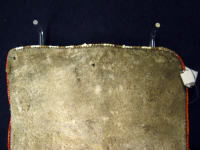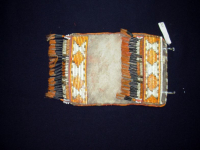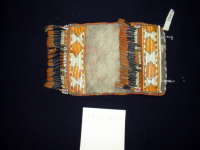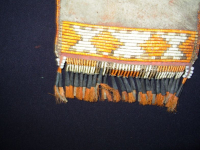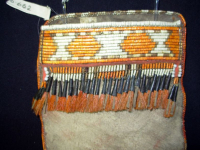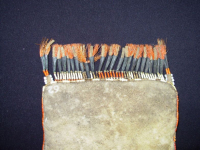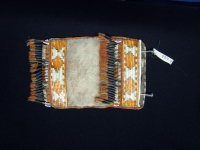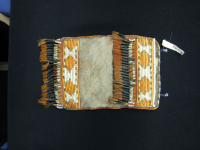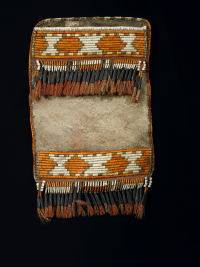Bag
Bag
Bag
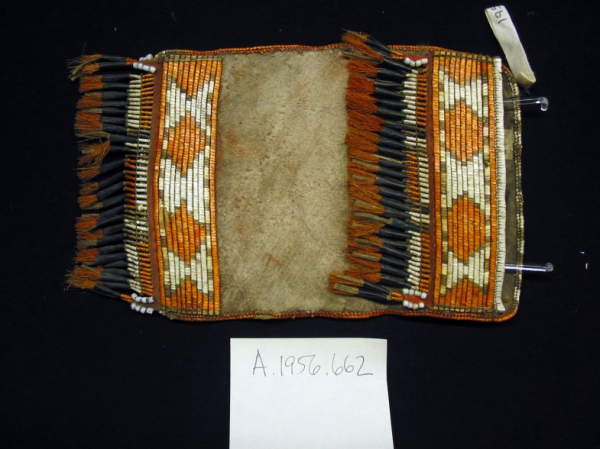
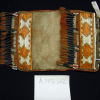
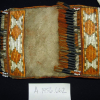
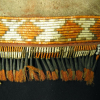
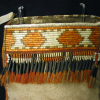
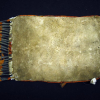

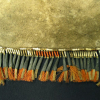
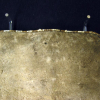

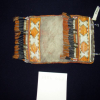


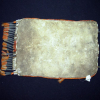
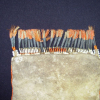

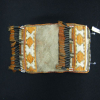
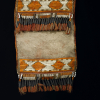
Bag, hung from a strap around the neck or across shoulder, a pre-contact form style of quillwork suggests a transitional type between Cree and Ojibwa styles, 18th century.
Read More About This Relative
Almost all local materials: unsmoked hide, possibly elk/deer type, porcupine quill, moose hair, ochre, metal, beads (pony beads), Corrie thinks the metal is unusually thin. Quite possibly "german silver" which is metallically closer to tin. Vegetable fibre, possibly European produced hemp cordage (twine on an inventory).
Hide bag face ornamented by two horizontal bands of quillwork, formed by quills wrapped around birch bark splints and sewn to hide, quill wrapped hide fringes, quilled edging, traces of ochre
On-site researchers: Small personal bag, hung from a strap around the neck or across shoulder, as part of ordinary dress. Definitely 18th century, a pre-contact form. Because only a few beads are used on this example it may have been made at an early date or later by people removed from trade; style of quillwork suggests a transitional type between Cree and Ojibwa styles Cory Willmott: has never seen metal cones of this type listed in fur trade inventories; Alan Corbiere: they could possibly be made from the bottom parts of ear bobs, a type of trade good that was given out by the handful.
On-site researchers
Provenance
About This GRASAC Record
Unknown Cree artist, hide quillwork bag. Currently in the Nationals Museums Scotland, A.1956.662. Item photographed and described as part of a GRASAC research trip December 2007; GRASAC item id 25214.
9 Apr 2007 Ruth Phillips, On-site researchers: Cory Willmott, Heidi Bohaker, Laura Peers, Ruth Phillips, Keith Jamieson, Alan Corbiere, Henrietta Lidchi, Robert Storrie, Chantal Knowles, Brenda McGoff













 Knowledge Sharing Platform
Knowledge Sharing Platform

